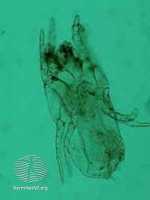Allergies, Author Interviews, OBGYNE, Pediatrics / 22.12.2020
Drinking MilK During Breast Feeding May Protect Children From Food Allergy
MedicalResearch.com Interview with:
Mia Stråvik
PhD-student | Doktorand
Department of Biology and Biological Engineering
Division of Food and Nutrition Science
Chalmers University of Technology
MedicalResearch.com: What is the background for this study?
Response: There is a need of research investigating the role of maternal diet during pregnancy and lactation on the baby’s allergy risk. Allergy is one of the most common chronic diseases of childhood, causing great suffering for the allergic child but also the entire family. Yet, the possibilities to cure and prevent this, in many cases life long, suffering are very limited. Previous research have indicated that maternal diet during pregnancy and lactation may affect the propensity of the child to develop an allergy, and diet is a factor you as a parent really can influence.
(more…)



























 Eliane Abou-Jaoude, MD
Allergy and Immunology Fellow
Henry Ford Health System
Detroit, Michigan
MedicalResearch.com: What is the background for this study?
Response: Early life exposure to diverse types of microbes is necessary for healthy immune development and may impact the risk for developing allergic disorders.
Theoretically the transfer of parental microbes to their offspring during infancy can influence a child’s developing gut microbiome and subsequent immune response patterns.
We wished to investigate whether parental pacifier cleaning methods, reported at 6-months of age, were associated with altered serum IgE trajectory over the first 18 months of life.
Eliane Abou-Jaoude, MD
Allergy and Immunology Fellow
Henry Ford Health System
Detroit, Michigan
MedicalResearch.com: What is the background for this study?
Response: Early life exposure to diverse types of microbes is necessary for healthy immune development and may impact the risk for developing allergic disorders.
Theoretically the transfer of parental microbes to their offspring during infancy can influence a child’s developing gut microbiome and subsequent immune response patterns.
We wished to investigate whether parental pacifier cleaning methods, reported at 6-months of age, were associated with altered serum IgE trajectory over the first 18 months of life.

